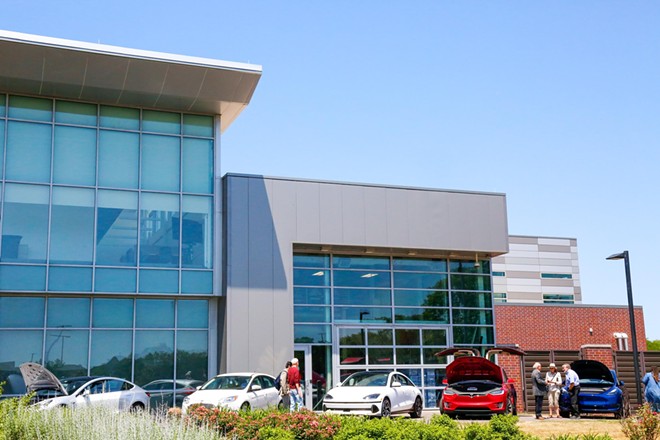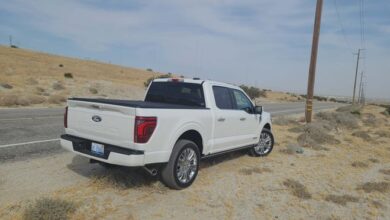Ohio to Spend $169 Million Building Electric Vehicle Charging Stations Near Highways in Next Five Years | Cleveland


Mark Oprea
Electric cars outside Tri-C’s Advanced Technology Training Center on Wednesday. Northeast Ohio could see a dozen new charging stations in the next five years, thanks to a federal grant program.
Ohio should be an easier state to drive in for Tesla, Rivian and other EV owners by the end of the decade.
That’s the overall goal underlying an announcement of a massive funding package by state electric vehicle advocates Wednesday morning, one that intends to inject hundreds of millions of dollars into bringing Ohio’s lackluster EV charging station stock up to speed.
And the data doesn’t lie.
Just in April, a report from S&P Global Mobility ranked Cleveland well near the bottom of the top 50 U.S. cities for registered owners of electric vehicles, a stat owed to both the high point of entry for said vehicles and, undeniably, the deficit of charging stations across the state.
On Wednesday, in a lecture room at Tri-C’s Advanced Technology Training Center , Grace Gallucci, the director of the Northeast Ohio Area Coordinating Agency, and experts on alternative energy infrastructure spoke promisingly to a packed room about how $169 million in federal grant dollars would be doled out across Ohio in the next five years.
Priorities in that spending money—spread out amongst NOACA, the Sustainable Ohio Public Energy Council and the Ohio Department of Transportation—were made clear: power stations for Ohio EV drivers should be conveniently placed. That is to, one day, have 9 out of 10 Ohioans within a 25-mile radius of an EV charging station.
“We have a pretty extensive alternative fuel corridor network,” Breanna Badanes, a spokesperson for DriveOhio, said. “But it’s clear that there are still plenty of gaps throughout the state, particularly in Southern Ohio, some in Northwestern Ohio. So that’s kind of what we’re here to talk about: planning for these future phases when we can build outside of the alternative fuel corridors, what we still need to prioritize as a state.”
Ohio currently has 1,578 stations in sum, those mostly on private land and relatively close to highways and shopping centers. Many are in areas with higher income levels, an issue of equity speakers on Wednesday said its charging station spending plans to address.
As of June, there a dozen new charging stations planned in the greater Northeast Ohio area, and only one so far in construction, a station west of Akron. A Pilot EV station, funded in part with federal dollars, opened off I-71 in Columbus in December.
These future stations, for which $56 million has been spent thus far, follow guidelines listed by the National Electric Vehicle Infrastructure program, which dictates a state must build a station every 50 miles off major transportation corridors and include at least four Fast Chargers of at least 600 kilowatts of combined power.
Katie Zehnder, vice president at HNTB, a transportation infrastructure firm, reminded attendees on Wednesday that Ohio’s push to become more EV-friendly is based on—just like bike lines and crosswalks—the premise that infrastructure creates culture.
The same goes, she said, for encouraging more electric usage at commercial enterprises, such as equipping UPS and DHL trucks with the on-road power they need to make the switch sustainable.
A recent survey of freight riders testing out new electric trucks showed Drive Ohio that driving EVs led to employees taking fewer sick days, less gas engine vibration, and led to “less back issues.”
“Which I was admittedly kind of shocked by at the time,” Zehnder said about the study. “Ride and drives, just exposure to EVs, that’s really the best thing. Because once people get into these vehicles, they really seem to enjoy them.”
Subscribe to Cleveland Scene newsletters.
Follow us: Google News | NewsBreak | Reddit | Instagram | Facebook | Twitter




